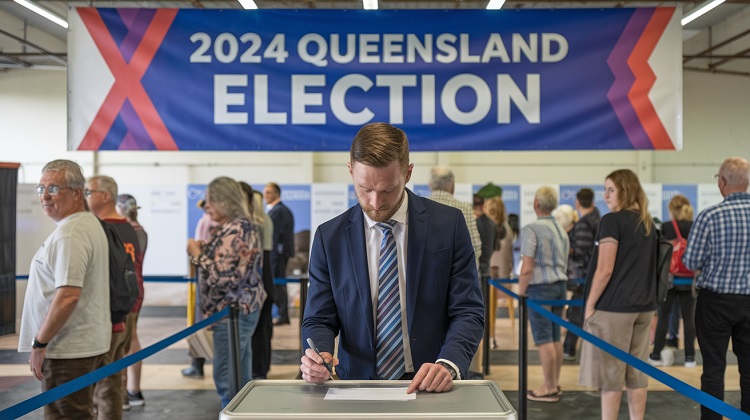In what is being labelled a win by Australia’s business council, the nation’s migration system will be overhauled with applications streamlined for highly skilled migrants. In other news, Inflation pressure is pushing the government to cut and re-prioritise nearly $10 billion in spending in tomorrow’s budget update.
Bold Migration Overhaul: Tackling Rorting and Boosting Economy
The Australian government has recently unveiled a comprehensive plan to revamp the country’s migration system, with the aim of addressing long-standing issues and stimulating economic growth.
Over the past decade, the existing system has been marred by visa jumping, exploitation by fraudulent educational institutions, and convoluted pathways for highly skilled migrants. These shortcomings have resulted in unsustainable migration levels, placing immense strain on housing and infrastructure.
In response, the government is implementing a series of changes to the student visa system, including stricter English requirements, a minimum income threshold for post-graduation stays, and a crackdown on bogus universities.
Similarly, the skilled work visa system is undergoing an overhaul, including the introduction of a skills in demand program, specialized pathways for crucial occupations, and expedited visa processing for exceptionally talented applicants.
Supported by both unions and businesses, this migration strategy seeks to restore net migration to manageable levels, striking a balance between workforce needs and economic demands.
By taking decisive action and focusing on long-term sustainability, the government aims to establish a robust and efficient migration system that bolsters the economy while combatting fraudulent practices.
Key Takeaways
- Neglected migration system over a decade addressed through a bold overhaul
- Focus on tackling visa jumping, ghost colleges, and exploitative practices
- Rigorous changes to student visa system including English requirements and income thresholds
- Skilled work visa system revamped to include new pathways, specialist skills, and faster processing times
Reasons for Neglecting the Migration System
The neglect of the migration system can be attributed to a combination of systemic loopholes and a lack of proactive measures to address emerging challenges. Over the past decade, the system has been neglected, leading to various issues.
Backdoors in the system have allowed for visa jumping and the proliferation of ghost colleges. Highly skilled migrants have faced convoluted and time-consuming pathways, hindering their contribution to the economy. Additionally, unsustainable migration levels have put pressure on housing and infrastructure. Exploitative practices by bogus universities and visa scams have further undermined the integrity of the system.
It is clear that the neglect of the migration system has had detrimental effects, necessitating an overhaul to ensure a fair and sustainable approach to migration.
Issues With the Student Visa System
Addressing the challenges faced by the student visa system requires a comprehensive examination of its issues and potential solutions. One of the key issues with the current student visa system is the presence of bogus universities operating as visa factories. These institutions exploit vulnerable international students by offering substandard education and facilitating visa scams.
Another issue is the lack of stringent English language requirements, which can result in students struggling to cope with their studies. Additionally, there is a need to crack down on students who use their study visas primarily as a means to work, rather than focusing on their education.
To address these issues, potential solutions may include implementing stricter regulations for universities, setting higher English language proficiency standards, and monitoring student work rights more closely.
Changes to the Student Visa Requirements
As part of the migration system overhaul, the Australian government is implementing changes to the student visa requirements. These changes aim to address issues such as visa jumping, ghost colleges, and exploitative practices by bogus universities.
One of the key changes includes imposing more rigorous English language requirements for international students. Additionally, there will be a minimum income threshold for students to stay beyond graduation, ensuring that they are genuinely coming to study rather than work.
The government is also cracking down on bogus universities operating as visa factories, with a focus on ensuring that students are enrolled in legitimate educational institutions. Furthermore, the possibility of capping the number of study visas granted is being considered.
These changes seek to improve the integrity of the student visa system and protect the interests of genuine international students.
Overhaul of the Skilled Work Visa System
To streamline the migration system and address issues of exploitation and inefficiency, the Australian government is implementing a comprehensive overhaul of the skilled work visa system. This overhaul aims to create a more efficient and transparent process for skilled migrants to obtain visas and contribute to the country’s economy.
Under the new system, a skills in demand visa program will be introduced, providing multiple pathways to permanent residency for migrants with sought-after skills. Additionally, a specialist skills pathway will be created for crucial jobs in science, technology, and cybersecurity. The government will also remove occupation lists for high-paying jobs, allowing for greater flexibility in selecting skilled migrants.
To expedite the visa application process, highly talented applicants will have their visas processed within seven days. The overhaul of the skilled work visa system is expected to attract and retain highly skilled migrants, boost the economy, and address issues of exploitation and inefficiency in the migration system.
Improving Pathways to Permanent Residency
With the aim of enhancing pathways to permanent residency, the Australian government is implementing a comprehensive overhaul of the skilled work visa system. The objective is to address the convoluted and time-consuming pathways that highly skilled migrants face, while also tackling exploitative practices by bogus universities and visa scams.
As part of the changes, the government is introducing a new skills in demand visa program, which will provide more paths to permanent residency. Additionally, a specialist skills pathway will be created to cater to crucial jobs in science, technology, and cybersecurity.
In order to streamline the process, occupation lists for high-paying jobs will be removed, and visas for highly talented applicants will be processed within seven days. This overhaul aims to improve the migration system and create a more efficient and effective pathway to permanent residency for skilled migrants.
Solidarity Between Unions and Businesses
The solidarity between unions and businesses is crucial in driving the success of the migration system overhaul.
As part of the government’s launch, the Business Council of Australia and the Australian Council of Trade Union have joined forces to support the proposed changes. This collaboration acknowledges the critical shortage of skills in technology, engineering, and healthcare sectors, which are key drivers of the economy.
Both unions and businesses recognize the importance of maintaining a competitive migration system that balances the need for skilled workers with the overall economic growth. By working together, unions and businesses can ensure that the migration system is fair, transparent, and efficient, benefiting both workers and the economy as a whole.
This solidarity will play a vital role in achieving the goals of the migration strategy and boosting the Australian economy.
Goals and Impact of the Migration Strategy
As the migration strategy aims to tackle rorting and boost the economy, its goals and impact are of utmost importance. The primary goal of the strategy is to return net migration to normal levels of 250,000 people per year. This is in response to the record net migration figure, which was driven by post-Covid catch-up and loopholes in the system.
The strategy includes measures to bring net overseas migration back to normal in a short time frame, building on the positive results already seen from previous decisive actions. The focus is on getting the migration system right for the future, ensuring a sustainable and efficient process that supports economic growth and addresses the concerns of rorting and exploitation.
Albion News is a great place to find informative, up-to-date news articles. We provide a wide range of unique articles that offer an interesting perspective on current events from around the world and from various different sources. You can easily search for the topics that matter most to you and explore in-depth pieces that provide insight into the issues and important debates occurring today. Albion News helps you stay informed with carefully researched and credible stories!







